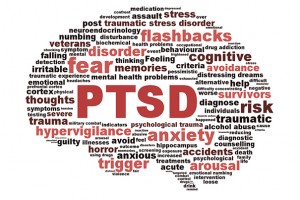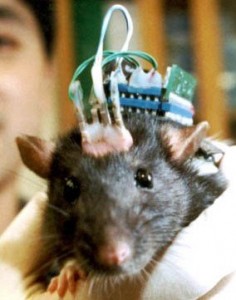1, 2, 3 … Erase Your Memory!
Eternal Sunshine
Have you ever wanted to selectively erase your memories of something or someone for good? I bet you have but, with today’s technology, it is not actually possible to choose who and what you can completely erase from your memory. Let’s take the movie, Eternal Sunshine of the Spotless Mind (2004), for instance. This movie is about two lovers, Clementine and Joel, who went through a painful break up and decided to have procedures done that would erase their memories of each other. Joel asked the doctor whether getting the procedure done would cause any brain damage and the doctor responded, “technically speaking, the procedure is brain damage.” Click below to watch a short clip of the movie:
Eternal Sunshine demonstrates a vivid understanding of how the brain forms memories, specifically those that are tied to intense emotional experiences. The movie plays on this idea that the brain stores emotional memories differently from memories that aren’t so emotional; therefore, we can conclude that traumatic experiences are tied to these emotional memories. Traumatic memories are stored in two parts of the brain: the hippocampus and the amygdala. The hippocampus does the job of converting short-term memories into long-term memories, while the amygdala is ultimately the center of emotions within the brain. An important fact to think about regarding traumatic memories is that if a person has hippocampal damage, they will no longer be able to form long-term memories; however, they might still be able to form subconscious traumatic memories if their amygdala is fully functioning. In the movie, Eternal Sunshine, Clementine constantly finds herself subconsciously thinking about emotional memories from her past even though those memories were completely erased from her mind in reality.
Post-traumatic Stress Disorder
Post-traumatic Stress Disorder, more commonly known as PTSD, is a mental health condition that is caused by a traumatizing experience in the past that may cause flashbacks, nightmares, and uncontrollable thoughts after the event has occurred. In a recent study, however, psychiatrists McGill and Harvard tested the use of an amnesia drug called propranolol, wh ich lends itself to the suppression of emotional factors in memories for trauma victims. Ultimately, what this does is allows people with PTSD to still retain full details of their memories, but the drug lessens their chances of feeling overwhelmed by those memories.
ich lends itself to the suppression of emotional factors in memories for trauma victims. Ultimately, what this does is allows people with PTSD to still retain full details of their memories, but the drug lessens their chances of feeling overwhelmed by those memories.
Neuroscientists and psychologists have also been able to develop more theories into the neural mechanisms of how memories are made and stores by means of newer, and better, imaging technology. They have found physiological interventions such as electrical currents and pharmacology that have proven to destabilize fearful memories in victims of PTSD. These victims are encouraged to create newer and safer mental associations to the same sensory cues having to do with whatever memory is causing them anxiety. Long-term memories have enough plasticity, when recalled, to be updated. The victim “updates” their memory by placing themselves in a non-threatening environment simulating their fears, with hopes that they will be able to gain control of them. This activity requires neural communication between the hippocampus and the amygdala. The hippocampus, in this case, cues the prefrontal cortex of any changed conditions in the brain while the amygdala produces a conditioned fear response.
Selectively Restoring Memories
A recent study that comes from the UCLA, Mary S. Easton Center for Alzheimer’s Disease Research and the Buck Institute for Research on Aging have provided evidence that patients with memory loss may be able to reverse their losses. Among patients that were tested were those who suffered from Alzheimer’s Disease (AD), Amnestic Mild Cognitive Impairment (aMCI), and Subjective Cognitive Impairment ( SCI). These patients showed a sustained improvement in their memory 3-6 months after the program started. Researchers were able to obtain such results from a complex, 36-point therapeutic program that involved changes in the patient’s diet, exercise, amount of sleep, brain stimulation, specific medicines and vitamins, and many other factors that would affect brain chemistry.
SCI). These patients showed a sustained improvement in their memory 3-6 months after the program started. Researchers were able to obtain such results from a complex, 36-point therapeutic program that involved changes in the patient’s diet, exercise, amount of sleep, brain stimulation, specific medicines and vitamins, and many other factors that would affect brain chemistry.
Dale Bredesen, Professor of Neurology and Director of the Easton Center at UCLA, furthered his research to get a better understanding the foundation of Alzheimer’s Disease and why it has had the least amount of success over the past decade in clinical trials aimed at stopping or slowing down the progression of the disease. According to Bredesen, Alzheimer’s Disease comes from an imbalance in nerve cell signaling, which means that the nerve connections are disturbed, therefore causing a loss of memory. Bredesen proposed a multi-component system that is personalized to each patient separately in order to determine what is affecting the plasticity signaling network of the brain of patients with Alzheimer’s Disease instead of testing a drug that only targets a single network in the brain. The downfall to this experiment was its complexity in that it was designed for the patients to follow strict guidelines in changes to their lifestyle- the patients were unable to stick to the protocol.
eRATicate that Memory
In 2014, researchers at the University of California, San Diego School of Medicine tested on rats to determine whether they could destroy a fearful memory from the animal’s past then reactivate that same memory. This memory reactivation process was done by stimulating nerves in the brain that are known to weaken and strengthen nerve cell connections, otherwise know n as synapses. The scientists genetically modified nerve cells in the rat brains to make them sensitive to light, then stimulated these nerve cells as they delivered an electric shock to the rat’s foot. Repeated trials caused the rats to associate the administered shocks with pain, therefore displaying fear behaviors as a result of these shocks.
n as synapses. The scientists genetically modified nerve cells in the rat brains to make them sensitive to light, then stimulated these nerve cells as they delivered an electric shock to the rat’s foot. Repeated trials caused the rats to associate the administered shocks with pain, therefore displaying fear behaviors as a result of these shocks.
Following the fearful responses from the rats, the scientists proceeded to weaken the stimulation of the same nerves, which caused a reduction in the rat’s fearful behavior, suggesting that the pain associated with the memory being stimulated was no longer present. Following the same procedures, the scientists attempted to reactivate the rat’s fearful memory by re-stimulating the same genetically modified nerves and the rats subsequently reacted with fearful behavior. Ultimately, the scientists caused the rats to have fear for something, took that fear away, then created that fear again by stimulating selective nerves in the rat’s brain at frequencies that would either strengthen or weaken the synapses.
Sources
Eternal Sunshine Notice [Digital image]. (n.d.). Retrieved from https://4.bp.blogspot.com/-19irf7bBaHc/TWbExVR57UI/AAAAAAAAByA/Z_pHtJbTz4s/s1600/gfh.png
Eternal Sunshine Of The Spotless Mind Trailer [Video file]. (2006, August 11). Retrieved from https://www.youtube.com/watch?v=1GiLxkDK8sI
Eternal Sunshine Quote [Digital image]. (n.d.). Retrieved from https://38.media.tumblr.com/tumblr_m0n2c3j3Zm1qfqzs8o1_500.gif
LaFee, S. (2014, June 1). How to Erase a Memory – And Restore It. UC San Diego News Center. Retrieved from http://ucsdnews.ucsd.edu/pressrelease/how_to_erase_a_memory_and_restore_it
Lu, S. (2015, February). Erasing bad memories. American Psychological Association Monitor, p. 42. Retrieved from http://www.apa.org/monitor/2015/02/bad-memories.aspx
Memory loss associated with Alzheimer’s reversed for first time. (n.d.). Retrieved from http://www.buckinstitute.org/buck-news/Memory-loss-associated-with-Alzheimers-reversed
O’Brian, S. (2014, August 27). Erasing traumatic memories. Harvard Gazette. Retrieved from http://news.harvard.edu/gazette/story/2014/08/erasing-traumatic-memories/
Pencil erasing “Memories” [Digital image]. (n.d.). Retrieved from http://www.mom-psych.com/Articles/Mind-and-Brain/Selective-Erasing-of-Unwanted-Memories-PR1020.html
PTSD Brain [Digital image]. (n.d.). Retrieved from https://media.news.harvard.edu/gazette/wp-content/uploads/2014/08/PTSDbrain1.jpg
Rat wearing memory chip [Digital image]. (n.d.). Retrieved from https://cdn.zmescience.com/wp-content/uploads/2011/06/rat_brain_implant-765259.jpg
Scientists find drug to banish bad memories. (2007, July 3). Retrieved from http://www.mcgill.ca/newsroom/channels/news/scientists-find-drug-banish-bad-memories-25906


